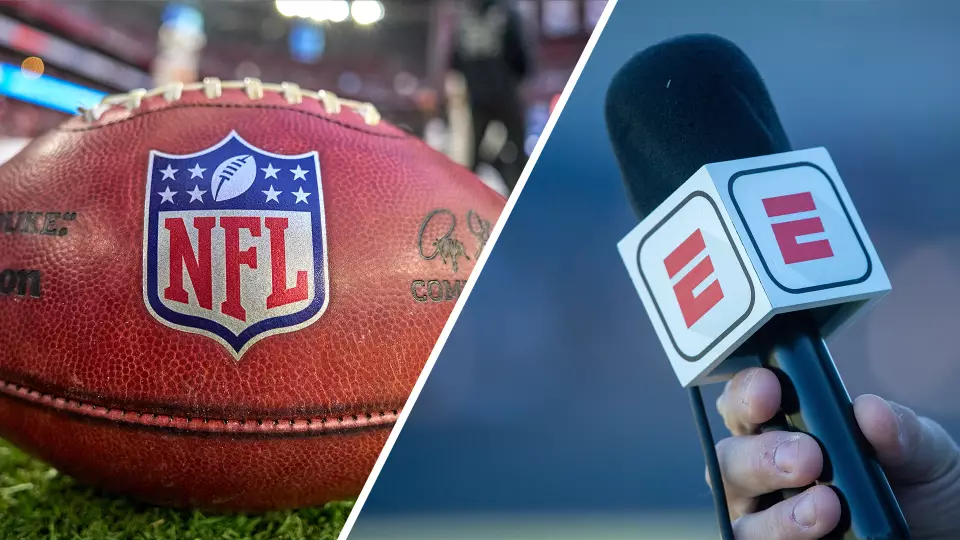In a game-changing development, ESPN has announced its acquisition of the NFL Network and a majority share of key NFL media properties, signaling a decisive shift in the landscape of football broadcasting. This strategic maneuver by ESPN doesn’t merely involve purchasing rights; it represents a concerted effort to reshape how fans experience the sport, blending traditional broadcasting with the relentless rise of digital innovation. By integrating NFL’s prized assets—including the coveted RedZone channel and fantasy football products—ESPN aims to establish a holistic, immersive platform that caters to every facet of a football lover’s journey.
This move is not just about acquiring content; it’s about wielding influence. ESPN’s infusion of resources and strategic vision into NFL’s media structures positions it to create a unified football ecosystem. This ecosystem promises nonstop coverage, real-time updates, and personalized experiences that cater to the modern viewer’s preferences for anytime, anywhere access. More significantly, this deal underscores ESPN’s ambition to be the central hub for NFL engagement, seamlessly combining traditional broadcast power with the cutting-edge of streaming technology.
Transforming Fan Experience: From Game Days to Digital Playgrounds
One of the boldest aspects of ESPN’s strategy is the integration of NFL content into its upcoming direct-to-consumer streaming platform. This signifies a clear recognition of shifting viewing habits; fans increasingly demand personalized, on-demand content rather than passively tuning into scheduled broadcasts. ESPN’s plan to combine NFL Network, RedZone, and other key assets into its digital ecosystem demonstrates a clear commitment to be at the forefront of this digital revolution.
The redefinition extends into the gaming sphere with the NFL’s fantasy football product merging into ESPN Fantasy Football. This is a masterstroke—it aligns the most popular fantasy platform with ESPN’s live and on-demand content, creating a seamless experience that keeps fans glued to their screens. By branding ESPN Fantasy Football as the “official” NFL game, ESPN is capitalizing on the league’s popularity to deepen fan engagement, and in the process, reinforce its dominance in interactive sports entertainment.
Furthermore, licensing additional NFL games on ESPN’s linear and streaming platforms significantly broadens the league’s visibility. Fans will enjoy more access—up to 28 games per season—thus elevating the overall football-watching experience. The decision to retain some games on NFL Network ensures a healthy balance between traditional TV and digital offerings, catering to diverse preferences while pushing the envelope towards a future where streaming is the primary conduit.
Challenges and Opportunities in a Competitive Market
While this ambitious integration promises vast opportunities, it also comes with substantial challenges. The sports media landscape is fiercely competitive, with rivals like Amazon and NBC also vying for NFL rights and streaming dominance. ESPN’s move must be executed flawlessly to realize its full potential, or risk diluting the value of the assets it now owns. Managing a seamless user experience across linear, digital, and live broadcast formats will be critical, especially as consumers demand higher quality and more interactive content.
Ownership rights to phenomena like the RedZone channel remain a compelling point of contention. ESPN’s acquisition of the rights, coupled with its plans to control branding and distribution, resembles a consolidation that could reshape how NFL content is consumed. The league’s decision to retain ownership of some media assets, like NFL Films and NFL.com, hints at a future where partnerships are nuanced and multi-layered. Such complexity offers opportunities for innovation but may also complicate strategic coordination.
In the broader scope, this deal symbolizes more than a transaction—it’s an assertion of ESPN’s unwavering commitment to lead in sports storytelling and digital engagement. The partnership with the NFL extends beyond traditional broadcasting; it’s about creating a sophisticated, hybrid experience that leverages storytelling, data-driven personalization, and streaming technology. This kind of strategic foresight suggests a future where sports media is less about static channels and more about living experiences tailored for each fan.
An Uncertain Yet Exciting Future for Football Fans
While some skeptics might question the sustainability of such expansive media rights and whether ESPN can maintain quality amid rapid technological change, the truth is that the landscape is evolving faster than ever. ESPN’s aggressive push into NFL media rights indicates an understanding that the next decade belongs to platforms that can innovate and adapt on the fly.
With so much at stake, this convergence of traditional media and modern streaming models is set to redefine fan engagement, providing not just more access but more meaningful, personalized connections to the sport. For passionate football fans, this could very well mark the beginning of a new golden age—one driven by innovation, integration, and an unwavering focus on delivering the game in its most captivating form.


Leave a Reply